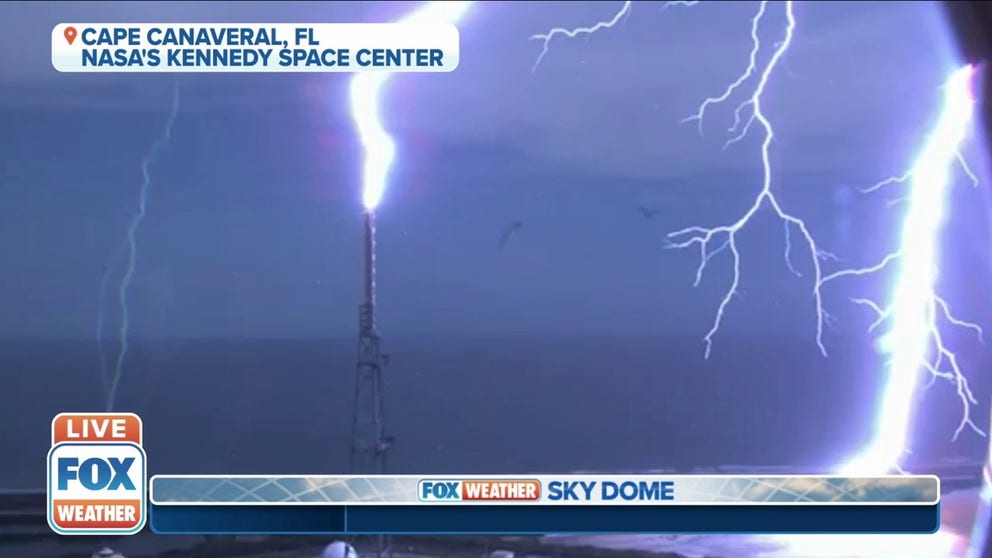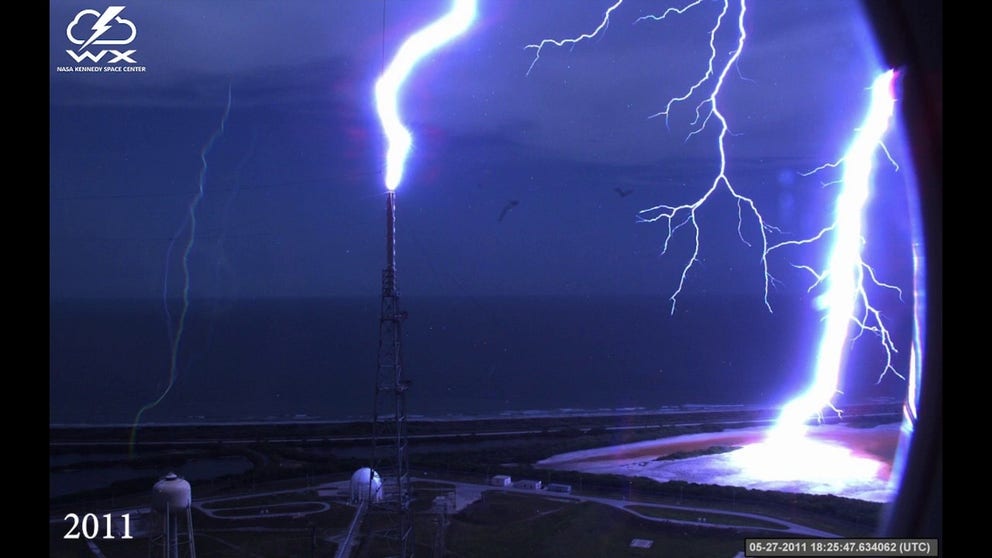NASA’s mega moon rocket survived the most powerful lightning strike ever recorded at space center
Central Florida is the lightning capital of the U.S.
NASA's mega moon rocket survives most powerful lightning strike ever recorded at space center
The most powerful lightning strike ever recorded at NASA’s Kennedy Space Center recently put the Florida spaceport’s lightning protection system at Launch Pad 39B to the test.
KENNEDY SPACE CENTER, Fla. – NASA has released new details about a stunning lightning strike near its mega moon rocket that could have meant big problems, if it wasn’t for the agency’s lightning protection system at Launch Pad 39B.
On April 2, storms surrounded the Space Coast during a wet dress rehearsal of the Artemis I rocket lightning struck inside the launch complex’s perimeter at least four times.
Thunderstorms are common in the Sunshine State, but the storm might have produced something out of the ordinary.
NASA says at least one of the bolts was positively charged, meaning it was more powerful than the typical cloud-to-ground strike.
HOW TO WATCH FOX WEATHER ON TV
"There was a tremendous amount of energy that was transferred by this positive event," Dr. Carlos Mata, chief technologist for Scientific Lightning Solutions, said in a statement. "After more than 30 milliseconds, we still had almost 3,000 amps flowing through the ground. This particular event falls into that tiny percentage – less than 1 percent – that you just don’t expect to happen."
The agency says positive strikes account for less than five percent of all cloud-to-ground strikes and this particular bolt carried more energy than a high voltage transmission line that powers an entire city.
"You design things to withstand certain energy levels, but in this line of business, you can’t test it to make sure that it does what you expect it to do – you have to wait for Mother Nature to test it for you. And Mother Nature did put it to the test," Mata said. "Once we started looking at the data and realized the system had done what we designed it to do, I don’t think that I can describe how I felt, knowing that we hadn’t let anyone down, that we did our due diligence, and we did it right."
BEFORE NOAA SATELLITES CAN IMPROVE WEATHER FORECASTS, HERE'S WHERE THEY ARE BUILT
The agency said all the captured energy safely traveled through the catenary wires to the ground.
Despite the tremendous energy, the agency says there was no damage to the Space Launch System rocket or Orion spacecraft.
The April event was only the second time that a positive strike was recorded at the Kennedy Space Center.
Historical lightning strikes at the Kennedy Space Center
NASA is no stranger to problems caused by thunderstorms.
Barring any type of additional thunderstorm activity and technical issues, NASA plans to retry the important dress rehearsal in late June.
The agency admits they’ll be keeping a close eye on the weather, which has caused problems for operations in the past.
If NASA can avoid trouble from Mother Nature, the mission team hopes to finish the critical dress rehearsal with the ambition of launching the rocket during the late summer or early fall.

